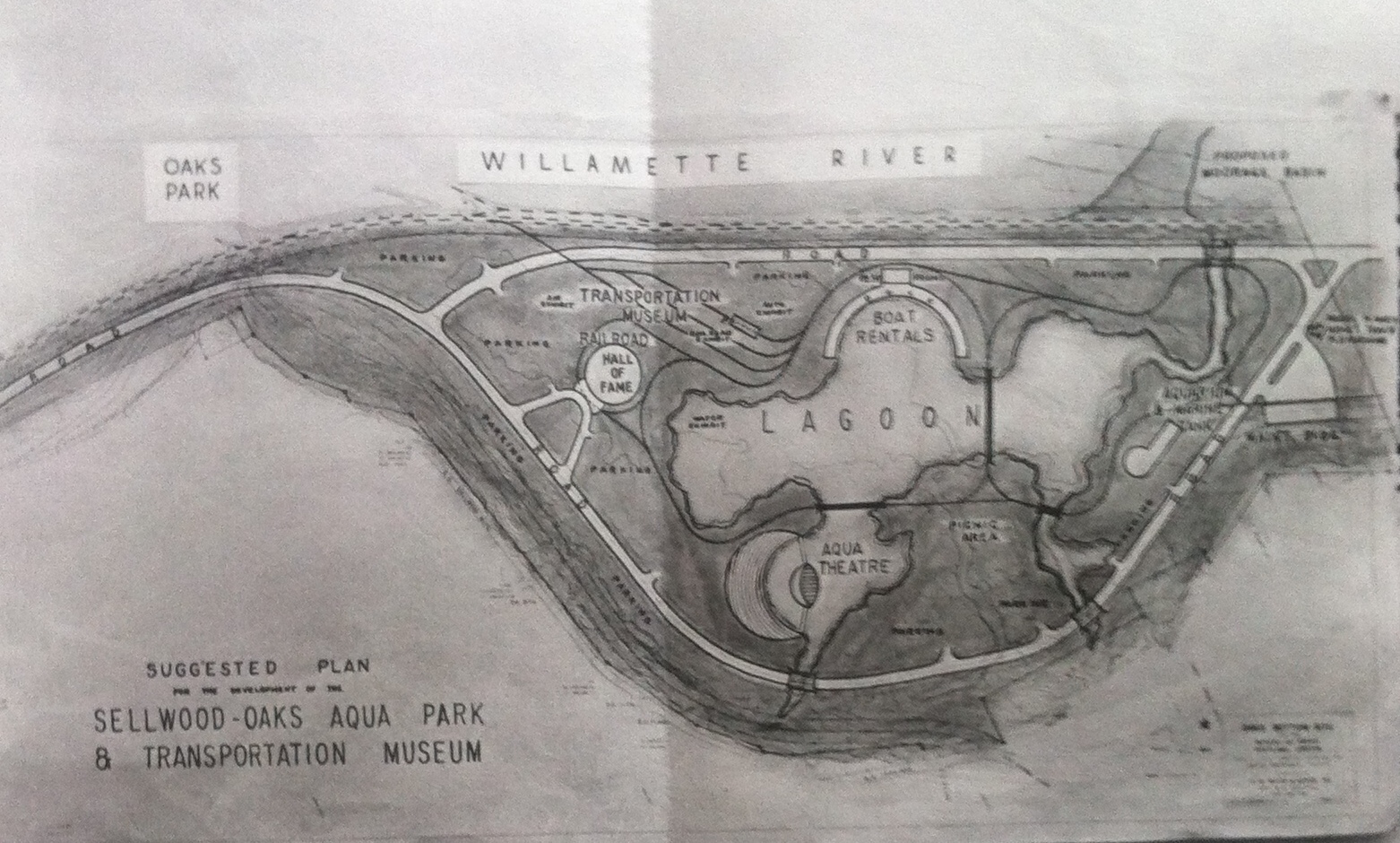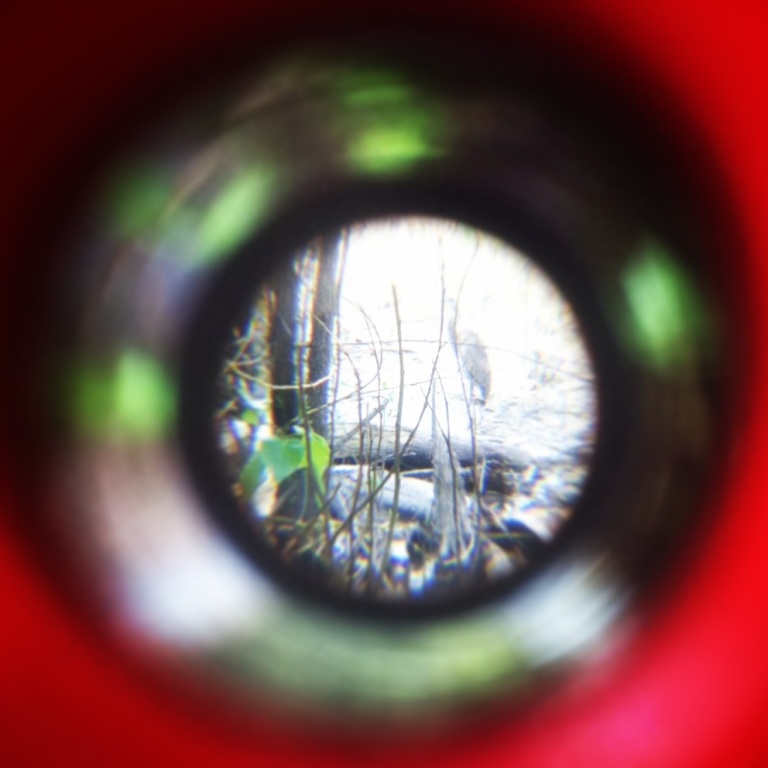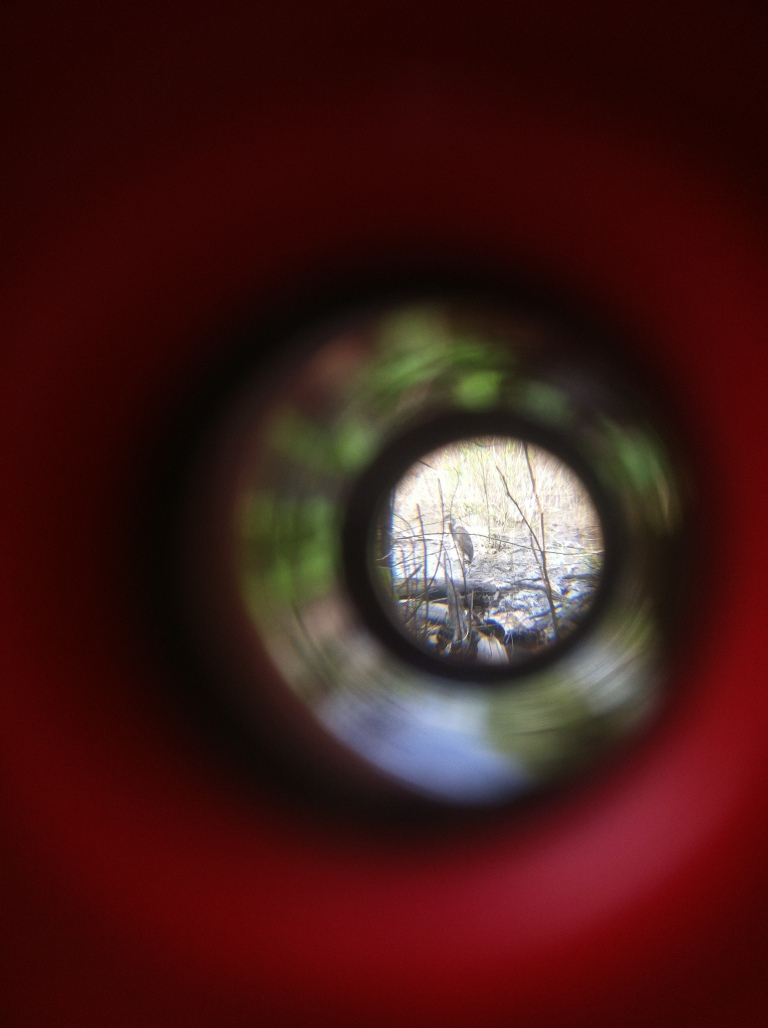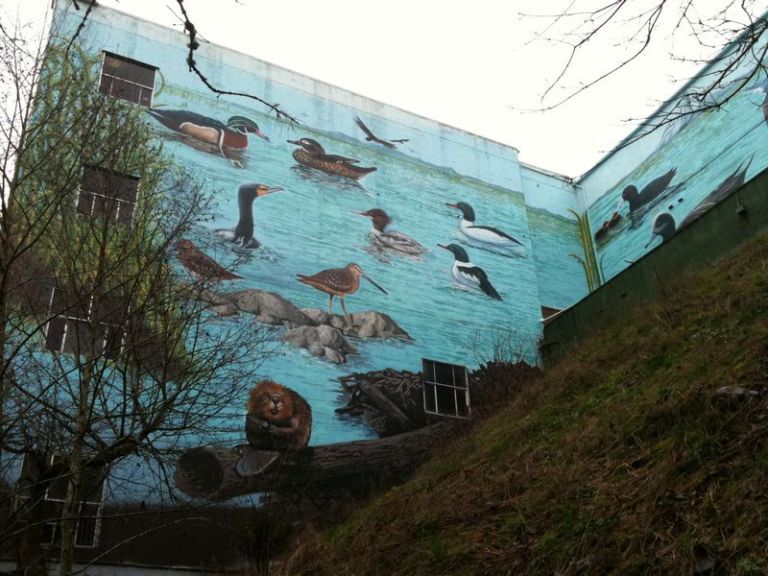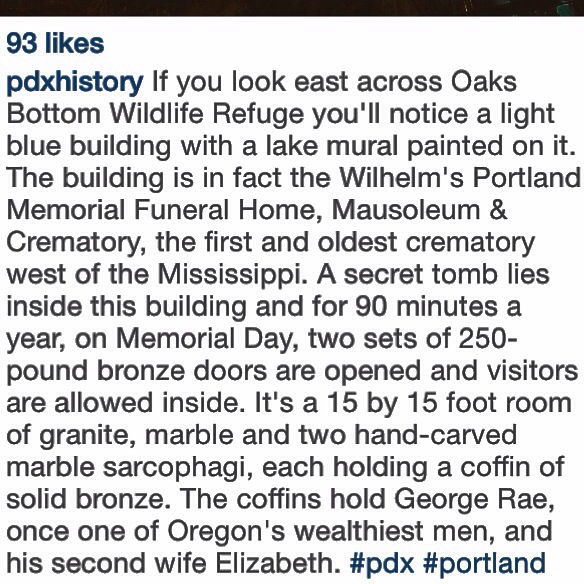Oaks Bottom is a floodplain wetland located along the east bank of the Willamette River. Part of the park is built on a sanitation landfill consisting of 400,000 cubic feet of construction waste material layered with soil. The City of Portland acquired the landfill property from the Donald M. Drake Company at the beginning of 1969 to block its development as an industrial park. The area was believed, at the time, to be one of the few remaining marshland areas in Portland, and local residents were strongly opposed to its development as industrial property.
Now, I do not go to this park all the time (once a year, we’ll say), and I am not an avid birder (I am no kind of birder, would be more accurate), so I feel confident saying that there is a one-hundred-precent chance you will see at least one blue heron on your visit. There is a heron rookery on nearby Ross Island, after all. However, I went in April, which seems like a good time to be a bird flying around Sellwood, and I don’t want anyone to get there hopes up for nothing. Like I said, I am not a birder, though I have held on to my childhood binoculars.
Wildlife refuges and natural areas represent the best possible thing that humans can do to beautify parts of their city, which, of course, is absolutely nothing. Oaks Bottom even manages to keep humans from doing anything in most of the park, It clocks in at a dozen dozen acres (a gross, if you like), but most of it is to enjoy from a distance. Its focal point is a lagoon that you walk around, for the most part separated from its shores by thickets of Oregon Grape, madrone and ash treelets, separating you from the refuge while giving you a large expanse to gave across as herons, egrets, hawks, Osprey, shorebirds, gulls, terns, hummingbirds, woodpeckers, grebes, falcons, vultures, waterfowl, and many others swoop, kaw, dive, flap, and soar from tree to thicket and back again. If you are American you might be excited to know that bald eagles grace Oaks Bottom Wildlife Refuge with their glorious presence. I remember there being there that day in April, but my memory is always dive-bombed by eagles because I also am American, so I can’t be sure. If I did see a bald eagle I also successfully resisted to urge to buy it, because, like destroying everything good and holy we have a distinct tendency to acquire it by any means necessary. Again, for this reason, Oaks Bottom is a major miracle. Just listen to David, author of the blogspot journal entitled Where I Walked:
Words cannot express how cool all this marshy wetland looks and feels to walk past and through. Just beautiful.
And to think! It was intended and used as a dump for years, and the rubble left in the wake of I-405 filled the north end! That means that not only did we enlightened human beings decide to not fuck it up—we decided as much after deciding to un-fuck up the previous fuck ups of prior generations! The Sellwood-East Moreland Improvement League (SMILE) really turned things around—they even wanted to name it after Wapato, a wetland potato-like plant that was important to the people here before the 19th/20th-century fuck ups who fucked up most of the Willamette waterfront from Eugene to Sauvie’s Island. One proposal, that I encountered contextless at the Oregon Historical Society wanted it to become a kind of Oaks Park annex that would turn the area into Portland’s answer to Disneyland:
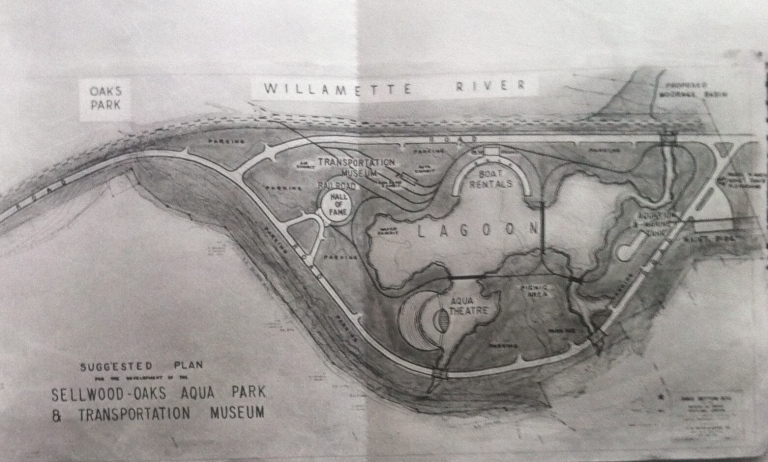 Suggested Plan for Oaks Bottom (’60s?)
Suggested Plan for Oaks Bottom (’60s?)
It would even feature an AQUA THEATRE, whatever that means, a HALL OF FAME, and an Autotopia-style TRANSPORTATION MUSEUM. Also, apparently, motorcycle enthusiasts wanted to make a track for themselves. The birds and the beavers, of course, can’t speak for themselves. Luckily, the Audubon Society and SMILE had their backs, so to speak. The debate continued, through the 1980s, when
Portland’s Bureau of Parks and Recreation was undergoing its own policy and philosophical evolution regarding the importance of natural areas in its more than 10,000-acre park system. Under the leadership of City Commissioner Mike Lindberg in the 1980s, park staff such as Jim Sjulin, Steve Bricker, and Fred Nielsen increasingly focused attention on the acquisition and management of natural areas.
In 1988, the Portland City Council adopted the Oaks Bottom Coordinated Resource Management Plan, which laid out a variety of management objectives. Ecologists from Portland Parks and Recreation and the Bureau of Environmental Services, the Audubon Society of Portland, the Urban Greenspaces Institute, and others are developing an adaptive management approach to improve fish and wildlife habitat and create more wildlife viewing opportunities in the Bottom. Controlled burns are now used to manage invasive species and diversify habitat. Himalayan blackberry, English ivy, and clematis have been removed and replaced with grasses and native plants along the steep slopes and in the Bottom.
While numerous problems remain, Oaks Bottom Wildlife Refuge’s future as one of the region’s significant urban wildlife and nature-viewing areas is secure.
It even has this great mural on the back of a crematorium hanging off Sellwood’s bluff.
That’s not a real beaver on a real log in front of a mural—it’s just a mural with a little francophonic trick of the eye. You can be sure to find this mural on your visit, and you might even see a real beaver to boot. I can’t predict the future! However, if the building doesn’t crumble to dust like the humans inside it, you can see it for a mile away because of the simple fact that there are no buildings in front of it, which, I will remind you, was my initial point, and indeed that of a fancy civic design thinker:
The metropolis is too extended to be organized as a sequence of streets and squares. It can become visible only as a sequence of open and built-up areas. Thus perception of a silhouette and perception of a sequence of spaces are no longer separate aspects but intertwined. The silhouettes of the built-up areas surround and shape the open spaces: they merge into a new type of urbanized landscape.
Indeed Oaks Bottom feels like a kind of civic utopia even without the AQUA THEATER—probably because of its absence—as there waits to the west an historic still running amusement park and the oldest Organ in Oregon in the roller skating rink (did I make that up? [yes, I made that up—the rink is the largest on the west coast, and, its proprietors argue, the last one with an organ in use. Also John Philip Souza played at the park at least seven times ; ), and south of that, a usable, beachy waterfront from which you can now wade into the Willamette, or dive into it from a dock—and above on the bluff, everything you’d need from a city, and public views of the refuge, the river, and downtown beyond, not to mention Sellwood Park and its idyllic municipal pool, picnic areas, and baseball fields (did I mention trees, grass, and free parking?), and somewhere amidst this caricature of an American summer Saturday a bald eagle flies above, proud to be an American or whatever.

